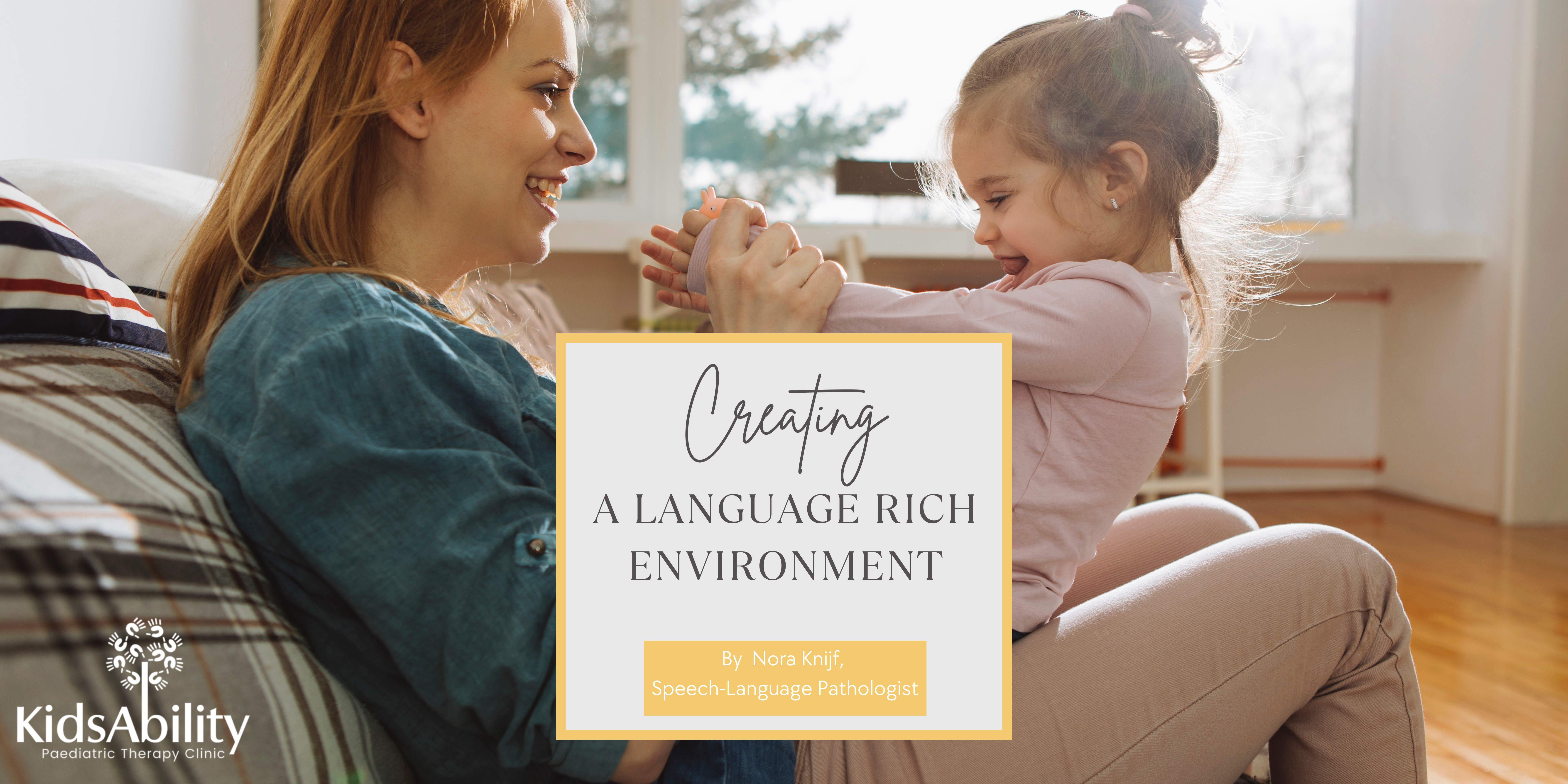CREATING A LANGUAGE RICH ENVIRONMENT
By Nora Knijf, Speech-Language Pathologist
We are 21st century parents. My husband and I both work full time, with hardly any time to just sit and relax, let alone stimulate our 18 month old. We wake up, pack our bags, shower, get dressed and rush out the door. We get home, eat dinner and then it is ready for bath and bed. With such busy, chaotic days, how can we ensure we are providing enough opportunities for our son to learn new words and skills?
One solution is to use what we are already doing everyday – our daily routines! Daily routines provide predictable and familiar situations for children to learn new language and practice the language they have already acquired. Routines are also repetitive, giving ample opportunity for children to hear words over and over again in a meaningful context and generalize this language across their environments (e.g. at daycare, school, on play dates, etc).
Here are 6 Tips for including language in your routines:
- Narrate what you are doing:
- As you are opening the tap to fill the bath – “I’m opening the tap. Look, the water is running into the bath. It’s getting full!”
- As you are packing their bag – “What do we need for school today? We need clean diapers, put them in! We need clean clothes, put them in!”.
- Label, label, label:
- Name objects, items, toys, body parts, etc. when in the midst of the routine.
- During bath time: “Here’s the soap.”, “I’m washing your foot.”, “I’m washing your hand.”
- Use simple but meaningful language:
- While getting dressed: “Put your arms in. The shirt goes over your head”
- While putting on shoes: “Put your foot in your sock. Pull it up! Time for your shoes!”
- Repeat, repeat, repeat:
- While washing hands: “Wash, wash, wash your hands.”
- While cooking: “Cut, cut, cut the carrot.”
- Let them fill in the gaps:
- “Brush your …..” (teeth/hair)
- “You’re eating a …..” (cookie/cracker/banana/etc.)
- Choices!
- Provide choices where you can, and have your child pick by saying a word/pointing if they are unable to talk yet.
- “Do you want yogurt or an apple?”
- “Do you want the spoon or the fork?”
Here are just some examples of daily routines, and words you can include in these routines:
Bath-time
- Concepts: in, out, open, close, etc.
- Descriptive words: hot, cold, wet, dry, etc.
- Body parts: head, hand, foot, hair, etc.
- Names of bath toys: whale, boat, starfish, etc.
Mealtime
- Descriptive words: hot, cold, sweet, salty, hard, soft, etc.
- Doing words: eat, drink, cut, pour, etc.
- Names of food items: apple, banana, chicken, broccoli, etc.
- Sounds: yum, crunch, squish, etc.
Dressing/Undressing
- Concepts: in, out, up, down, over, etc.
- Clothing items: pants, shirt, socks, shoes, etc.
- Body parts: leg, arm, head, etc.
Bedtime
- Concepts: in, out, under, over, etc.
- Read a book!
Contact Us
- Unit 8 Midtown Plaza, 273 Elgin Avenue. P.O. Box 2787, KY1-1112 Grand Cayman, Cayman Islands
- (345) 943-5437
- info@kidsability.ky
Opening Hours
- Monday-Friday 8:00 AM – 5:00 PM
- Saturday 8:00AM - 4:00 PM
Subscribe To Newsletter
- 2023 KidsAbility. All Rights Reserved.

